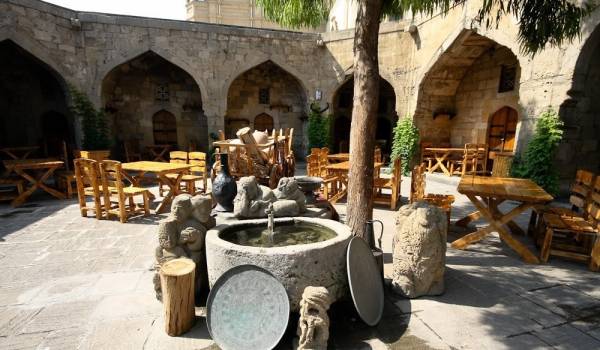
Cultural life of Baku
Ethnographically rich Guba is one of the regions where the traditions of carpet weaving have been established and developed. The Guba carpet center is divided into three parts. The mountainous part includes the centralized points in the villages of Gonagkend, Khashy, Jimi, Afurja, Yerfi, Buduq, Giriz, Jeck, Salmasoyud;
Guba carpets are designed with floral ornaments, geometric patterns, and sometimes animal motifs. The most rich compositions of Guba carpets are "Ancient Minaret", "Gimil", "Alpan", "Gollu-chichi", "Pirabadil", "Hajigayib", "Giriz", "Jeck", etc. "Chichi", "Shırt Chıchı", "Ghımıl", "Gimi" "Yerfi" carpets adorn many museums and private collections around the world.
One of the most popular museums in Guba is the Khinalig Historical and Ethnographic Museum, which was established in 2001 in the village of Khinalig of Azerbaijan. Under the leadership of Khalilrahman Jabbarov, a prominent and noble family from Khinalig, and with the help of the local population many interesting works are being exhibited in the museum. Archaeological and ethnographic materials from ancient times, including rugs and carpets, clay and copper utensils, various household items, stone inscriptions, and other findings show that a high culture existed here. This museum, consisting of two halls of 160 square meters, is like a "museum inside the museum".
The most important part of the museum is the manuscript section. These books, dating from the fifteenth to early twentieth centuries, are priceless manuscripts stored in roofs, tombs because of fear of the Soviet-era and discovered during the independence period of Azerbaijan.
It is clear from the books that the village was closely linked to science and was an important scientific center for that period of time. The existence of high-quality books on religious sciences such as Figh, tafsir, and hadith, along with history, language, logic, mathematics, and medicine prove this. The village elders had heard from their fathers and grandfathers that books were brought in sacks from cities like Istanbul and Izmir during the Ottoman period.